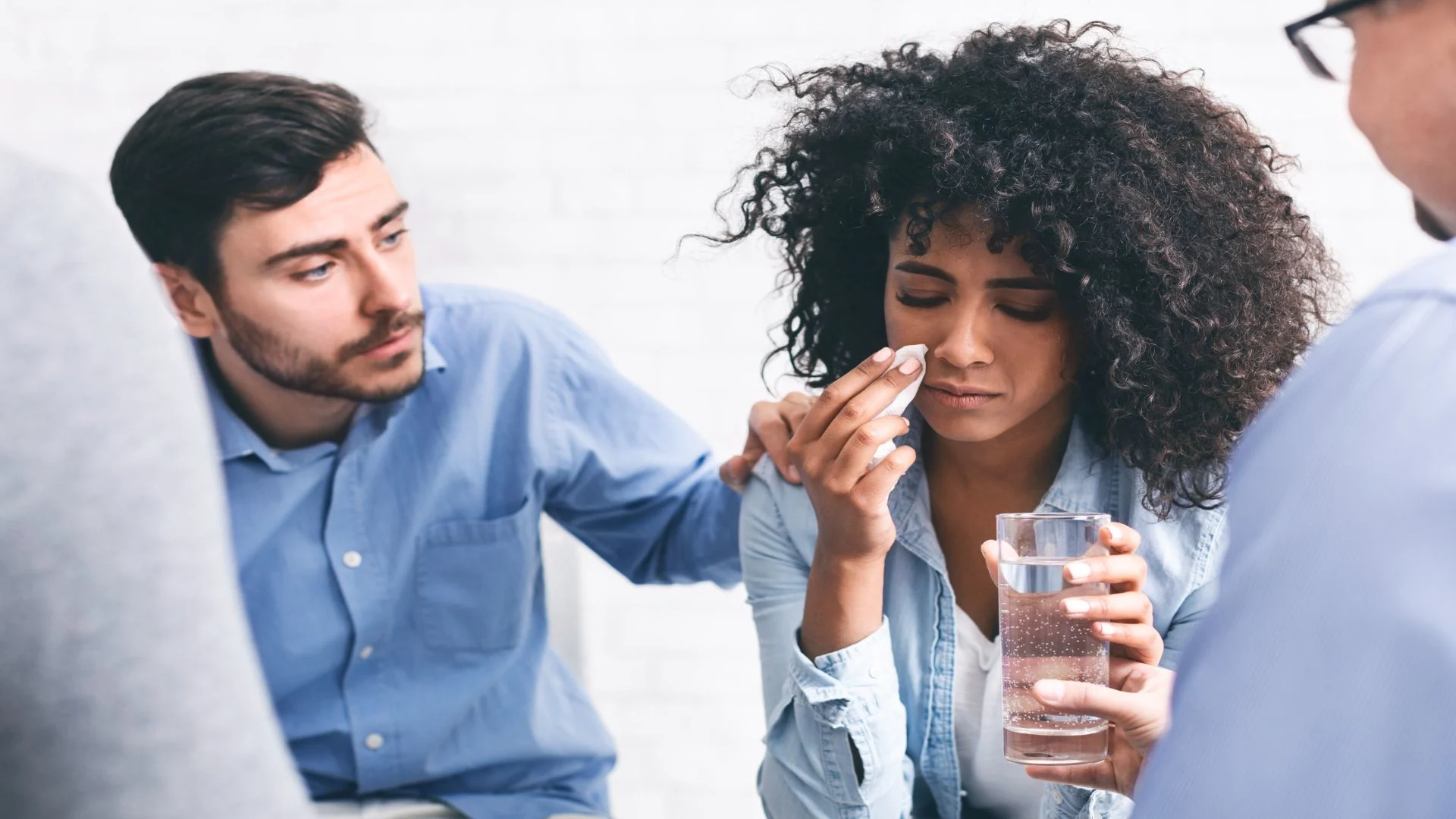Addiction Recovery - Opioid Addiction
What Is an Opioid?

What is an opioid? Discover how these drugs impact the brain and body, contribute to addiction, and explore effective paths toward treatment and recovery.
How do opioids affect the brain?
Opioids bind to receptors in the brain, blocking pain signals and releasing dopamine, which creates feelings of euphoria and relief. This mechanism reinforces continued use, leading to physical dependence and potentially addiction over time as the brain craves these effects.
What are the risks associated with opioid use?
Opioid use carries risks such as physical dependence, addiction, overdose, and death. The dangers increase when opioids are combined with other substances like benzodiazepines or alcohol, heightening the likelihood of fatal outcomes due to respiratory depression or overdose.
How long does recovery from opioid addiction take?
Recovery from opioid addiction depends on the individual and their treatment plan. It involves detox, therapy, and support, with recovery times varying from weeks to months. Long-term care and follow-up are crucial for sustaining sobriety and managing triggers or relapses.
Are there medications to help with opioid addiction recovery?
Yes, medications like methadone, buprenorphine, and naltrexone can help manage opioid addiction. These medications reduce cravings, minimize withdrawal symptoms, and help stabilize individuals in recovery, often in combination with counseling and behavioral therapy for holistic healing.
Can opioid addiction treatment be accessed anonymously?
Yes, opioid addiction treatment is confidential, and individuals can seek help without revealing their identity. Treatment services are protected by privacy laws, allowing people to access care anonymously while ensuring their personal information remains secure throughout recovery.
What is an opioid, and why do these drugs have such a powerful grip on so many lives? Every day, individuals and families face the pain, confusion, and fear that come with opioid addiction. The emotional toll can feel overwhelming, especially when you don’t know where to turn.
But understanding the problem is the first step toward healing. By learning how opioids affect your body and mind, you can begin to see a way forward. There is a path to recovery—and with the proper support, a life free from addiction is not just possible; it’s within reach.
Understanding Opioids
Opioids are potent drugs used to treat pain by altering how the brain and body respond to discomfort. They are prescribed for moderate to severe pain, especially after surgeries or injuries. While effective, opioids have a high potential for misuse and addiction.
Examples of Prescription Opioids:
Oxycodone (OxyContin, Percocet)
Hydrocodone (Vicodin, Norco)
Morphine
Codeine
Illegal Opioids:
Heroin: Highly addictive and illegal.
Fentanyl (illicit): Extremely potent and often mixed with other substances.
How Do Opioids Work?
Opioids bind to receptors in the brain and body, blocking pain signals and releasing dopamine, which causes euphoria. This leads to pain relief and feelings of pleasure.
Tolerance, Dependence, and Addiction:
Tolerance: Over time, higher doses are needed for the same effect.
Dependence: The body relies on the drug, causing withdrawal symptoms if stopped.
Addiction: Compulsive drug use despite negative consequences, driven by changes in the brain’s reward system.
The Path to Addiction
Opioid addiction often develops gradually, influenced by a combination of genetic, environmental, and behavioral factors, as well as the misuse and overprescription of opioids.
Risk Factors for Opioid Addiction
Opioid addiction doesn't happen overnight—it develops over time, influenced by multiple factors. These factors can be genetic, environmental, and behavioral, making some individuals more vulnerable to developing an addiction than others.
Genetic Factors: Some people are genetically predisposed to addiction. Their brain chemistry may make them more sensitive to the pleasurable effects of opioids, increasing the likelihood of misuse and dependency.
Environmental Factors:
A person’s environment plays a significant role in addiction risk. Those with a history of trauma, abuse, or exposure to substance use in their household are more likely to misuse opioids. Additionally, living in areas with easy access to opioids increases the chances of misuse.
Behavioral Factors:
Certain behaviors, such as seeking immediate pain relief or using opioids recreationally, can lead to misuse. Individuals with a history of mental health issues like depression or anxiety may also turn to opioids as a form of self-medication, increasing their risk.
Role of Overprescription and Misuse:
Overprescription of opioids has been a major contributor to the addiction crisis. Many individuals are introduced to opioids through legitimate prescriptions for pain management. However, when prescriptions are too frequent or prolonged, they can lead to misuse. Furthermore, taking opioids in ways not prescribed—such as taking higher doses or using someone else’s medication—can significantly increase the risk of addiction.
Signs and Symptoms of Opioid Use Disorder (OUD)
Opioid use disorder (OUD) manifests through a variety of physical, behavioral, and emotional signs. Recognizing these symptoms early can be crucial in seeking help.
Physical Symptoms:
Drowsiness: Opioids often cause a sedative effect, leading to extreme fatigue or difficulty staying awake.
Slowed Breathing: Opioids can slow the respiratory system, which is particularly dangerous at higher doses and can lead to overdose.
Behavioral Signs:
Secrecy: Individuals struggling with OUD may hide their opioid use, becoming secretive or deceptive about their activities.
Neglect of Responsibilities: As the addiction worsens, people may neglect personal, professional, or family responsibilities, choosing to focus on obtaining and using opioids instead.
Emotional Symptoms:
Depression: Chronic opioid use can lead to significant mood disturbances, including feelings of sadness or hopelessness.
Anxiety: Many people with OUD experience heightened anxiety, either as a result of their drug use or due to the psychological toll of addiction.
Cravings: One of the hallmarks of addiction is an intense, uncontrollable urge to use the drug despite knowing the negative consequences.

We’re Here To Help You Find Your Way
Would you like more information about opioids? Reach out today.
Pathways to Recovery

Recovering from opioid use disorder requires a comprehensive approach, combining medical treatments, behavioral therapies, holistic strategies, and a strong support network to ensure long-term success.
Treatment Options for OUD
Recovery from opioid use disorder (OUD) is possible with the right treatment approach. Effective treatment often combines medications, behavioral therapies, and holistic strategies to help individuals manage cravings, address the root causes of addiction, and rebuild their lives.
Medication-Assisted Treatment (MAT):
MAT combines medications with counseling to treat OUD. Medications help reduce cravings and withdrawal symptoms, making it easier to focus on recovery.
Methadone: A long-acting opioid used to reduce withdrawal symptoms and cravings without producing a "high."
Buprenorphine: A partial opioid agonist that helps alleviate cravings and withdrawal while minimizing the risk of misuse.
Naltrexone: A medication that blocks the effects of opioids, preventing the user from feeling euphoria if they relapse.
Behavioral Therapies:
Behavioral therapies are essential for addressing the psychological aspects of addiction. These therapies help individuals change their thought patterns, develop healthier coping mechanisms, and prevent relapse.
Cognitive Behavioral Therapy (CBT): CBT helps individuals identify and challenge negative thought patterns that contribute to substance use and replace them with healthier behaviors.
Counseling: One-on-one or group counseling provides emotional support and strategies to cope with cravings, stress, and triggers.
Support Groups: Peer support groups, such as Narcotics Anonymous (NA), provide a sense of community, accountability, and shared experience.
Holistic Approaches:
Holistic methods complement traditional treatments by focusing on the body and mind. These approaches help individuals reduce stress, regain balance, and promote well-being.
Lifestyle Changes: Encouraging healthy habits such as regular exercise, balanced nutrition, and adequate sleep.
Mindfulness: Meditation and deep-breathing exercises can help manage anxiety and reduce stress.
Wellness Activities: Activities such as yoga, art therapy, and outdoor recreation can provide therapeutic benefits for the body and mind.
Importance of Personalized Treatment Plans
Each individual’s journey to recovery is unique, so personalized treatment plans are crucial. A tailored approach ensures that both medical and psychological needs are addressed, enhancing the chances of successful recovery.
Individualized Care:
No two people experience addiction in the same way, so their treatment plans must be adjusted to meet their specific needs. Whether it’s addressing co-occurring mental health disorders, family dynamics, or unique lifestyle factors, a personalized plan increases the likelihood of long-term recovery.
Integration of Medical and Psychological Support:
Effective treatment requires both physical and emotional support. Combining MAT with behavioral therapies helps to address both the physical cravings and the underlying emotional causes of addiction, providing a comprehensive approach to healing.
Support Systems in Recovery
A strong support system is a key component of recovery. It provides encouragement, accountability, and resources for maintaining sobriety.
Role of Family:

Family members can play a vital role in supporting recovery. Their involvement in therapy sessions, emotional support, and a healthy home environment can make a significant difference in the recovery process.
Peer Support:
Connecting with others who have experienced similar struggles can provide invaluable encouragement. Peer support groups offer understanding, motivation, and a sense of belonging, helping individuals feel less isolated during their recovery journey.
Community Programs:
Community-based programs like recovery coaching, sober living environments, and local support groups can provide ongoing resources, guidance, and accountability. These programs help individuals stay connected, build resilience, and sustain long-term recovery.
Managing Withdrawal Symptoms
Opioid withdrawal can be physically and mentally challenging, with symptoms ranging from anxiety and irritability to nausea, sweating, and muscle pain.
Medical interventions such as medication-assisted treatment (MAT) can help manage these symptoms, providing relief and supporting the body’s natural recovery process.
Ready to Overcome Opioid Addiction? We Can Help
Opioid addiction can feel overwhelming, but recovery is possible with the proper support and treatment. At The Edge Treatment Center, we are dedicated to helping individuals take control of their lives, free from the grip of addiction.
With personalized treatment plans, compassionate care, and a strong support system, we can guide you through every step of your recovery journey. Don’t face it alone—reach out today and start your path to a healthier, addiction-free life.

We’re Here To Help You Find Your Way
If you or a loved one is struggling with addiction, there is hope. Our team can guide you on your journey to recovery. Call us today.
Written by
The Edge Treatment Center
Reviewed by
 Jeremy Arzt
Jeremy ArztChief Clinical Officer
Addiction Recovery
Opioid Addiction
May 5, 2025
